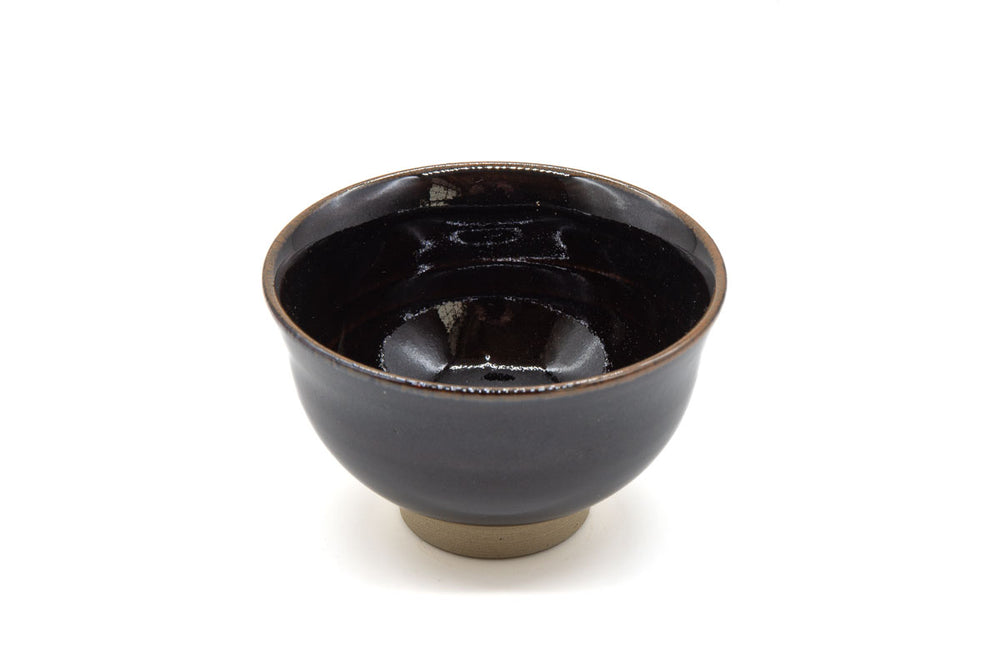MIRAKU KILN
Walking through the Miraku Kiln compound gates is akin to traveling back in time 400 years. Tucked off a busy shopping street, this huddle of traditional structures, including the wooden “Rankoan" tea house, creates a calm oasis. The main focus, however, is their climbing kiln, a series of connected wood-fired kilns set on an incline that dates back to 1708 and was fired up until the late 1980s. Although Miraku firing methods have become more modernized, the climbing kiln, a premodern technological wonder, reflects their historic connection to this area.
Miraku kiln remains a family affair: Miraku Kamei XV, the master, works with his son, Kamei Hiisaki. Wife, mother, and executive manager Kamei Maki presides over day to day business. Processes passed down for generations are still used, starting with the careful refinement of local soil into the special clay that was used by the original Miraku kiln.
The seven glaze colors ubiquitous to takatori ware are hand-stirred by Hiisaki and his father in the open air. Miraku uses all-natural materials that differ slightly every year, which introduces a serendipitous element to their creation. In their words, the color is Kouuna guuzen: a lucky coincidence, 幸運な偶然.
MIRAKU KAMEI XV
Perfecting Enshu Takatori & reviving the art of tea ceramics
HISAAKI KAMEI
A Pioneering Spirit

The sixteenth generation of Miraku potters, Hisaaki has a unique approach fitting to the youthful mantle he carries. If his father’s work is dedicated to the earthy, natural colors of Kyuushu, Hisaaki’s work looks upward towards the heavens.Hisaaki’s pottery is characterized by the color blue—a vibrant, tumultuous swirl that fades into starless, glossy black.
He achieves this unusual color by using iron-rich clay and applying a white glaze that turns blue during firing, the alchemy of which he discovered through careful study of previous masters and his own blend of clay ingredients. In reflection of the northern skyline it evokes, Hisaaki calls the color “aurora.”
His training came both from the Miraku kiln and study at a ceramics school in Kyoto, which he says was essential to learning how to quickly and accurately produce a work in a specific style. His original approach, however, expands upon this background to make unique, outstanding pieces. The natural flow of glaze and the way it can showcase the graceful shape of taktakori ware is on display in his productions.
A combination of originality and tradition, his work strives to bring fresh expression to a regal face. As the next generation, his focus on innovation and education are important for the continued development and production of takatori ware.
He is an instructor at various locations in Fukuoka City. His work has been exhibited alongside his father in the US, and individually in Japan and France. His aurora-style tea ware has been used by the mayor of Fukuoka City and the French royal family.
Works

BIOGRAPHY & AWARDS
Biography of Miraku Kamei XV
1960 - Born as eldest son of Miraku Kamei XIV; real name Masahisa Kamei
1981 - Graduates from Ceramics Course, Dept. of Design, Kyoto Saga University of Art
1991 - Earns doctorate in fine art at American Century University
2001 - Assumes title of Miraku Kamei XV
2006 - Fukuoka City Outstanding Skill Commendation
2015 - Fukuoka Prefecture Outstanding Skill Commendation
2016 - Solo exhibition in Boston (U.S.A.); lectures and demonstrations at MIT and Harvard University
Present - Member of Japan Kogei Association; director, Hakata branch of Japan Ceramics Society; part-time pottery instructor at Fukuoka City Fukusho High School; instructor at various culture center.
Biography of Hisaaki Kamei XVI
1991 - Born as eldest son of Miraku Kamei XV
2014 - Graduates from Dept. of Economics, Faculty of Economics, Hosei University Graduates from Comprehensive Course in Molding, Kyoto Prefectural Ceramists’ Technical Institute;
2016 - “Father & Son” exhibition in Boston (U.S.A.) Nishi Sarayama Kiln Opening 300th Anniversary “Father & Son” exhibition,
2017 - Daimaru Dept. Store Hakata (Fukuoka); “Father & Son” exhibition, Keio Dept. Store Shinjuku (Tokyo) “Father & Son” exhibition, Boston (U.S.A.)
2018 - Solo exhibition, Paris (France)
2019 - Part-time instructor at Fukuoka City Fukusho High School; pottery instructor, Momochi Palace Culture Center
2023 - Solo exhibition, Lyon (France)

TAKATORI WARE
As Fine As Porcelain
The Takatori pottery style traces its roots back to the early 1600s, when the lord of Fukuoka domain brought Korean potters back to Japan and built the first kiln at the foot of Mt Takatori. For over 400 years, artisan families in Fukuoka have preserved these techniques and continued to make enchanting pieces of pottery that are the centerpiece of every table.
Takatori ware is known for its being extremely fine: a thickness of no more than 5 millimeters, more akin to porcelain than the stoneware it actually is. Lively exchange among Korean and Japanese pottery work influenced the development of takatori style, alongside technical discoveries in special glaze-making processes and clay refinement.
Takatori ware was specifically created for tea ceremony, cha no yu, that had taken Edo-Era Japan by storm. Stylistic preferences in pottery were guided by the tea masters of the era, whose names now call to mind specific imagery: Oribe style, after Furuta Oribe, has some warping and organic elements. Enshu, after Kobori Enshu, is said to be symmetrical and precise.














